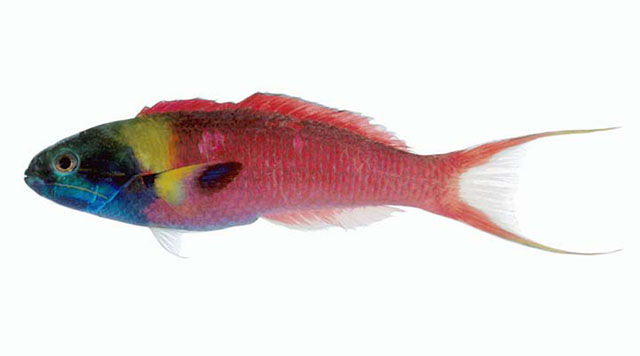| Labridae (Wrasses), subfamily: Corinae |
| 16 cm SL (male/unsexed) |
|
reef-associated; marine; depth range 0 - 15 m |
| Indo-Pacific: Somalia (Ref. 30573) and South Africa (Ref. 4392) to the Line, Marquesan, and Tuamoto islands, north to southern Japan, south to Rowley Shoals, northern New Zealand and Lord Howe and Rapa islands. |
|
Dorsal spines (total): 8-8; Dorsal soft rays (total): 13-13; Anal spines: 3-3; Anal soft rays: 10-11. Juveniles easily identified by the color pattern and rounded snout. Males become brightly colored and head usually green with a yellow band following on the body (Ref. 48636). Head naked, no scales dorsally on opercle. Initial phase with a broad blackish stripe from snout through eye to caudal-fin base (Ref 9823). |
| Occurs in aggregations over shallow lagoon and seaward reefs (Ref. 9710) and on reef flats (Ref. 9823). Feeds mainly on crustacean zooplankton (Ref. 1602). Spawns at dusk above reefs (Ref. 90102). Rarely marketed (Ref. 2334). Minimum depth reported taken from Ref. 128797. |
|
Least Concern (LC); Date assessed: 04 March 2009 Ref. (130435)
|
| harmless |
Source and more info: www.fishbase.org. For personal, classroom, and other internal use only. Not for publication.
